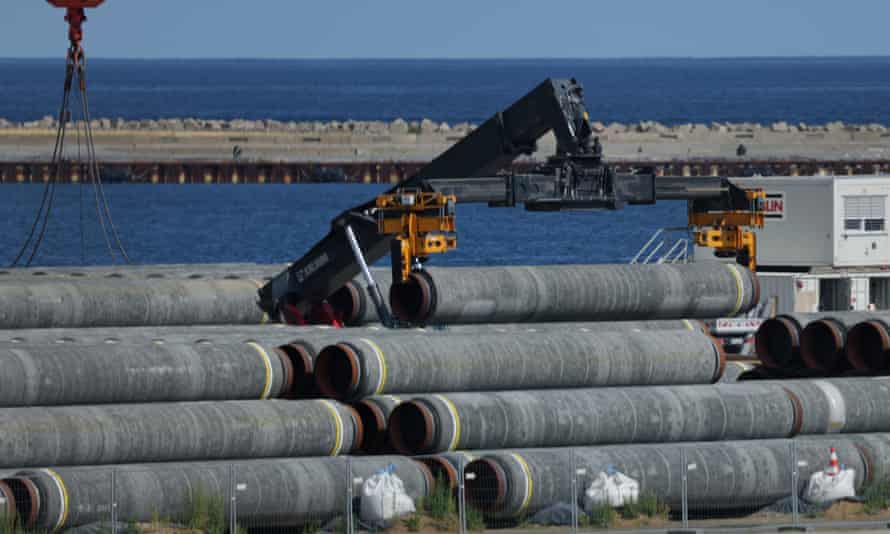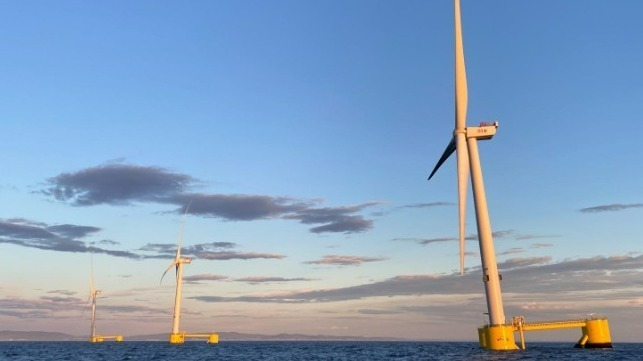Electricity generation by U.S. state

The U.S. gets 60 percent of its electricity from fossil fuels, but plans are afoot to drastically reduce that share.
- Joe Biden’s home state of Delaware is America’s worst polluter – if only in relative terms.
It’s possible that I shall make an ass of myself. But in that case one can always get out of it with a little dialectic. I have, of course, so worded my proposition as to be right either way (K.Marx, Letter to F.Engels on the Indian Mutiny)

The U.S. gets 60 percent of its electricity from fossil fuels, but plans are afoot to drastically reduce that share.



While international policymakers and regulatory bodies have already been applying some degree of pressure on the energy industry to decarbonize for years now, the push for cleaning up the global energy sector’s act has been supercharged by the most recent report from the Intergovernmental Panel on Climate Change (IPCC) and the United Nations (UN).
The landmark 6th Assessment Report announced in no uncertain terms that we have reached a point of no return for the climate, having irreversibly altered weather patterns and unequivocally warmed the Earth due to human activity. However, there is still a small window of time to mitigate further damage and change the planet’s trajectory toward catastrophic climate change. This will require decarbonization at a massive scale and on an incredibly short timeline. The UN, not mincing words, has called it a “code red for humanity.”
That being said, it’s simply not feasible for the global economy to quit fossil fuels cold turkey. It’s going to take time, investment, infrastructure, and enormous effort to complete the clean energy transition, and in the meantime, the world still needs hundreds of billions of barrels of oil. This dynamic has made it hard to convince oil supermajors to set aside fossil fuels -- their stalwart cash cow -- when there is still so much money to be made before oil goes quietly into that goodnight, especially when brand new mass-scale clean energy enterprises probably won’t turn a profit for years.
Despite the bumps in the road, however, it’s clear which way the tide is turning. Fossil fuels aren’t irrelevant yet, but they have no place in the future if this planet is to have one. Already, some oil execs and fossil fuel industry defectors have decided to abandon ship and are positioning themselves at the helm of the clean energy revolution, bringing their oilfield know-how and innovative expertise with them.
And now, at long last, some oil companies are reading the writing on the wall and deciding to bet big on renewables in order to establish a place at the front of the pack for the new energy era. One of the most notable cases is that of BP, which is changing course and liquidating huge portions of its fossil fuel holdings in a historic shift in strategy.
BP’s bold new Chief Executive Bernard Looney is trying to make sure that BP can beat its peers in a race toward clean energy dominance. “He aims to slash BP's output by 40%, or about 1 million barrels per day, an amount equal to the UK's entire daily output in 2019,” Reuters recently reported. This makes BP the very first major oil company CEO to announce intentional cuts in future oil production. “At the same time,” the report continued, “BP would boost its capacity to generate electricity from renewable sources to 50 gigawatts, a 20-fold increase and equivalent to the power produced by 50 U.S. nuclear plants.”
This plan will entail the selling off of $25 billion in fossil fuel assets over the next few years, representing about 13% of the company’s total fixed assets.
While BP is proving to be a trailblazer in the fossil fuel sector’s adaptation to the clean energy revolution, the rest of European Big Oil isn’t too far behind. For the last few years, European supermajors have been pivoting away from total dependence on fossil fuel markets, trying to make the transition from Big Oil to Big Energy. On the other side of the Atlantic, however, it’s a different story. Big Oil in the U.S. has been much slower to accept the inevitable and start to prepare for the coming sea change.
While the Biden administration has been making a concerted effort to catch up to the rest of the global clean energy industry through the likes of legislation including the historic Infrastructure Bill, it will be hard for companies that have not already started to pivot toward renewables to stay competitive, and could even imperil the energy security of nations that fail to curb their dependence on oil, gas, and coal.
By Haley Zaremba for Oilprice.com

PUBLISHED SEP 27, 2021 10:38 PM BY THE MARITIME EXECUTIVE
Portuguese utility EDP Renewables has good news about its WindFloat Atlantic floating offshore wind farm, the first project of its kind with semi-submersible platform bases. In its first full year of operation, WndFloat Atlantic's three turbines produced 75 GWh of electricity, exceeding expectations for the pre-commercial scale development.
"The project has performed well above expectations. It has registered high levels of availability and a production that has exceeded expectations for many months," said EDPR project director said José Pinheiro. "We wanted to share these positive results of a project that has marked a 'before and after' in the offshore wind energy industry because of the technology used and because it has become the first floating and semi-submersible wind farm in the world."
EDPR is already exploring options for commercial-scale developments in Portugal and abroad, and it is working through a JV partnership with Engie to bring the system to market.
WindFloat Atlantic draws on platform technology developed by Principle Power, an engineering startup based in California. Repsol also contributed to the pilot-scale installation.
Floating offshore wind has a much larger global potential than near-shore, bottom-fixed sites, but also comes at a significant lifetime cost premium. Its proponents hope to bring down the cost of moorings, float structures, and long-term maintenance as the technology matures.
Principle Power is seeing early success in the budding floating-wind market. Its platforms are also in use at Statkraft's Kincardine wind farm off Scotland, which is the world's largest at a capacity of 50 MW. Kincardine just started operations this month, becoming the second large-scale installation of turbines based on semi-submersible platform. Cobra and Flotation Energy, the firms behind Kincardine, are also among the bidders in Scotland's giant ScotWind lease round.
Principle Power says that it is learning from each of these projects, finding "important innovations in modularization and manufacturability to further increase deliverability and competitiveness." A third generation of its design will be deployed for the Les Éoliennes Flottantes du Golfe de Lion (EFGL) project off Leucate, France.
